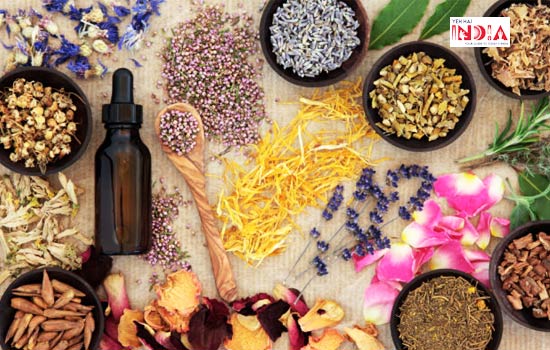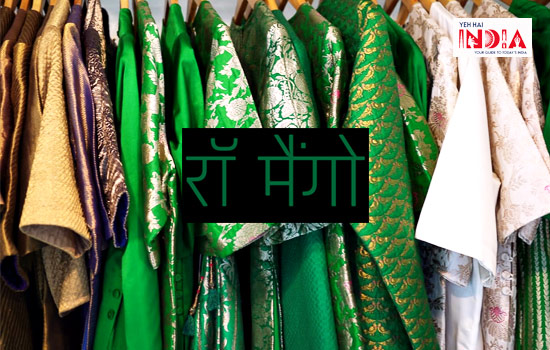Thangka in Tibetan literally means a ‘flat painting’ either on a scroll or wall. In this article you will get to know all about history, designs, beliefs etc of Thanggka paintings of Ladakh
Thangkas original function was to protect and cure people who would easily get engulfed by it irrespective of the mood in the scenes that is depicted.
The art form is a traditional Buddhist art form that is considered as a tool for enlightenment. Rather than self expression, the art form gives a meaning which holds a stronger, spiritual message that leads to enlightenment.
It is meditational and helps bring balance and peace in life.
It has influences from Tibetan culture, Indian, Chinese, and Nepal. Hence, there are different schools and styles which can be determined through the geographical location, the materials that are being used, the cultural influences, and the schools of Buddhism being followed.
Recommended Story – Tanjore Paintings : Classical South Indian Painting
History of Thangka Painting

As per the historians, Dards made Tibet their home back in the 4th and 5th centuries. They migrated along the Indus River and introduced irrigation eventually settling down the communities, though it is still unclear when Buddhists communities established themselves in Ladakh.
In the pages of history, it is conceded that in the 7th century, after the Eastern propagation, those who overran Ladakh fleeing westwards from the early Tibetan Tubo Kings.
Back then, Tubo Empire in Yarlung, situated in Central Tibet had displaced the native inhabitants who had their own independent state with its own literature, language, and culture by establishing aristocracy.
These people then continued living in the remote areas of Kashmir, Ladakh, Zanskar, and Himalayan Regions of Nepal.
Buddhism in Ladakh is not only ancient but highly widespread with the population predominantly being Buddhists and deeply influenced by Tibetan Buddhism. Under this, they follow two schools – Mahayana and Vajrayana.
Under these, Buddha is worshipped as a deity who has attained Nirvana. The various incarnations of Buddha called as ‘Bodhisattvas’ are worshipped in the monasteries.
Ladakh holds a strong cultural theme that attracts millions of tourists who are keen learners of ancient Buddhism which is still practiced here.
Design of Thangka Painting
Most of the Tibetan paintings are in the form of frescos and murals that can be witnessed on the monastery walls. They depict the different avatars of Buddha, life scenes from the life of Buddha, portraits of lamas, angels and demons, demons stomping on human bodies, and Tibetan Gods.

One such vital subject is ‘Bhavachakra’ which means ‘Wheel of Life’, a visual representation of ‘Abhidharma’ teachings (Art of Enlightenment).
The composition showcases Buddha in center with smaller deities around him as the central figure defines supremacy.
Size
The proportions or the measurements of Thangkas play a very crucial part. The measurements used are standards for all deities. A basic unit of measurement here is called ‘Sor’ and the Sor is decided by the artist depending on the scale of painting.
The size varies though the dimensions are rectangular with vertical formats for any depiction. Once painted, a Thangka is mounted atop a frame of brocades to be made into a scroll.
Category of Thangka Painting
The Thangkas fall into 11 categories
- Mandalas
- Tsokshing (Assembly Trees)
- Patriarchs
- Avoliteshvara
- Female Bodhisattvas and Mother
- Tutelary deities
- Dharma-protecting deities
- Arhats
- Wrathful deities
- Other Bodhisattvas
Colours

Even the colours used in Thangkas have symbolism. The main five colours used are – Red, Green, Yellow, Blue, and White. These are the primary colours in Mahayana and are associated with five primordial Buddha. They even represent five elements of the life – air, water, earth, air, and ether.
- Red stands for Power, Love, and Attachment
- Green stands for Activities
- Yellow stands for Prosperity and Wealth
- Blue stands for Wrath
- White stands for Peace and Purity
Motifs

Motifs are influenced by their religious, geographical and political conditions and also hold symbolism just like the colours used. In their tradition, several symbols used are based on mythology, cosmology, ceremonies, landscapes and so on. Of all these, eight symbols hold great significance and are known as ‘Eight Auspicious Symbols of Good Fortune’.
When Buddha attained enlightenment, the Vedic Gods presented him with offerings and these symbols represent those offerings.
- White Parasol/Gdugs – Royalty and Protection
- A Pair of Golden Fishes/Gser-nya – Happiness and Fertility
- A Treasure Vase/Gter-guibum-pa – Wealth in Abundance
- Lotus/Padma – Purity and Renunciation
- White Conch Shell/Dung-gyas-khyil – Supremacy of Buddha’s Teachings
- Endless Knot/Dpal be’u – Buddha’s Endless Wisdom and Compassion
- Victorious Banner/Rgyal-mtshan – Buddha’s Victory over Defilements
- Golden Wheel/Khor-lo – Wheel of Dharma of Buddha’s Teachings
Iconography
Various elements that are painted and positioned around the central supreme figure hold various layers of meanings and connotations. Few prominent figures usually witnessed in the painting are –
- Mahakala – A wrathful manifestation of Lord Shiva. He is believed to be the guardian of Buddha’s teachings in Buddhism.
- Avalaoketeshwara – He is thousand-armed god of fertility. His arms are symbol of compassion and wisdom. This deity embraces and embodies both the sexes as under Tantric Vajrayana Buddhism, the compassion is considered as masculine and wisdom as feminine.
- Tara – A consort to Avalaoketeshwara, she is believed to be the incarnation of Buddha’s mother. She was believed to come back 1000 years after Buddha’s death in order to bring Buddhism back to Tibet.
Recommended Story – Ajanta Cave Paintings
Mandalas

Associated with Buddha and his ascension to enlightenment, a ‘Mandala’ is a form of Buddhist prayer and art. It symbolizes universe, the practitioner’s miniature universe and a platform on which the addresses take place by Buddha.
A powerful psychic energy, a typical Mandala is five feet across as measured, has pictorial diagram of Buddhist deities in concentric, circular geometric shapes.
It showcases two-dimensional form of the three-dimensional space which consists of the deities. It gives a way to meditation for the practitioner to connect with the deity.
Creation

Creating Thangkas may take from several months to several years. The materials used are taken from the local Tibetan mines and includes agate, gold, silver, saffron, cinnabar, ocher, and so on.
For the ideal pigmentation, these materials are well-grounded. Later, cattle bile is mixed with the materials in the form of a gel. This helps in increasing the durability of the materials.
Choosing a canvas plays a crucial role. It is generally light-coloured and should not be too hard not thick.
Usually the preferred material for canvas is a fine cotton cloth and pure white poplin. They may even use white silk. The larger Thangkas though are made by sewing separate fabrics together, making it gigantic. They are even sewn on wooden frames.
Once the canvas is prepared, a layer of glue is applied to it. Then they let this layer dry completely. Later, one more layer is applied that is a paste of lime. When this layer dries up, they keep rubbing the canvas with a shell or glass until the cloth is totally hidden from the sight. After it is hidden and is not seen, it is all ready for painting.
Preservation –
Thangka paintings are not framed when they are on display; instead, the larger thangkas are hanging scrolls. This is the reason it should be kept in a cool and dry place.
The colours in the painting may even fade over time, therefore, too much exposure to light or moisture should be avoided. Keeping it for displays for shorter periods of time is the best thing to do.
Thangka Paintings are spiritual as well serves as an exquisite art form which needs more encouragement and limelight as it comes across as a difficult art form.
When are you planning to explore more about Thangkas?
Also Read – Mandala Art Therapy and Its Healing Benefits










